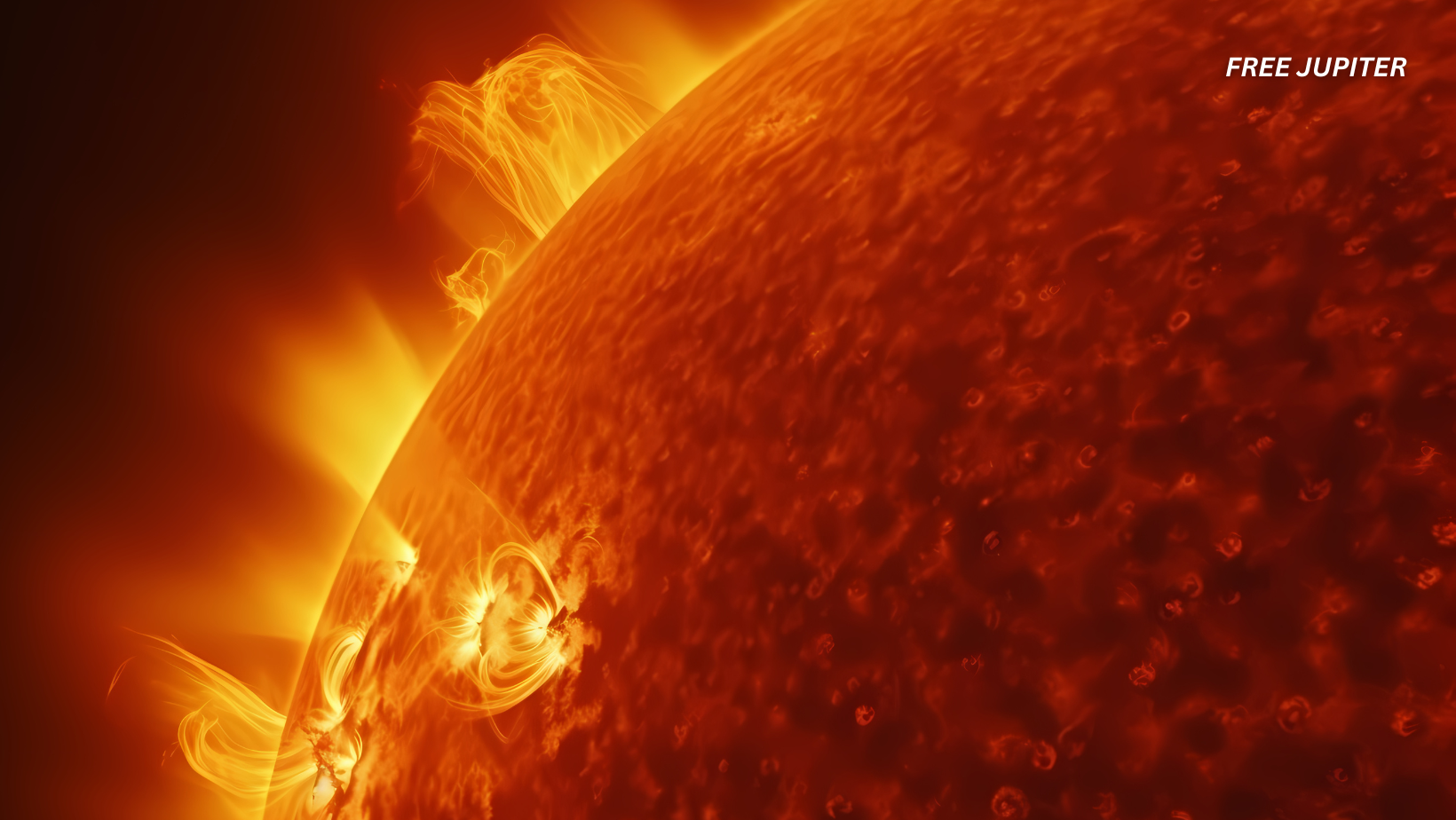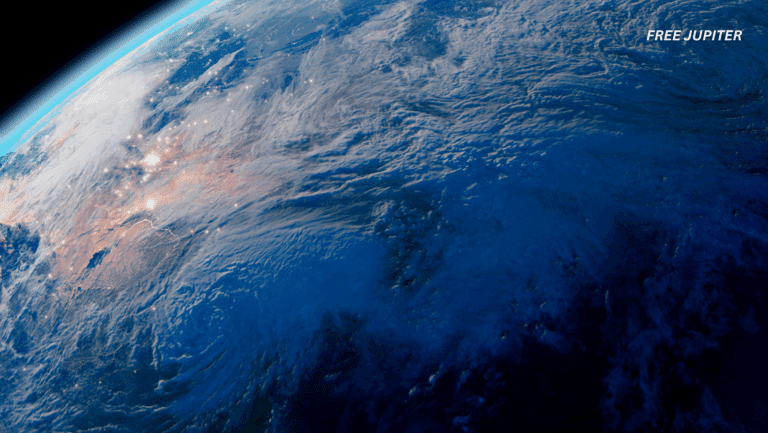Friendly Note: FreeJupiter.com shares general info for curious minds 🌟 Please fact-check all claims—and always check health matters with a professional 💙
The Sun has long been humanity’s most familiar celestial body—a fiery sphere providing light, warmth, and energy. Yet, new research hints at a startling possibility: the Sun may conceal a “dark compact core” at its center, potentially a primordial black hole (PBH) or another ultra-dense object. This concept challenges our conventional view of stars and opens a fascinating window into stellar and cosmic evolution.
Astronomers Earl Bellinger and Matt Caplan, in a recent study published in The Astrophysical Journal, used advanced models and solar observations to investigate how the Sun’s core might behave if such a hidden object exists. Their findings suggest that a compact, dense core could help reconcile certain discrepancies between observed solar data and standard models of the Sun’s interior.
Listening to the Sun’s Inner Workings
To understand what could be hiding at the Sun’s core, scientists “listen” to the star. Helioseismology, the study of solar vibrations, works similarly to seismology on Earth. Just as geologists use earthquake waves to map the interior of our planet, solar physicists examine the Sun’s oscillations to understand its internal structure. The Sun vibrates in millions of modes, producing patterns that can reveal temperature gradients, density layers, and internal flows.
Complementing this, neutrinos—tiny, nearly massless particles produced in the Sun’s nuclear reactions—offer a direct view of the core’s nuclear activity. Neutrinos escape from the core almost unimpeded, carrying information about the reactions powering the Sun. When Bellinger and Caplan included a compact object at the Sun’s center in their models, they found that the predicted solar vibrations and neutrino fluxes aligned more closely with observed data.
In essence, the Sun’s “heartbeat” and the particles it emits suggest that something unusual could exist deep within, subtly shaping the star’s behavior.
Read more: NASA Has Just Captured the Closest Images of the Sun Ever Taken
Primordial Black Holes: Ancient Cosmic Seeds
Primordial black holes are unlike the black holes formed by collapsing stars. Instead, they may have formed in the extreme density fluctuations that occurred just fractions of a second after the Big Bang. Some could be microscopic, yet extraordinarily dense—compact enough to fit inside a star’s core without immediately consuming it.
If a PBH resides in the Sun, it would accrete matter extremely slowly, radiating minuscule energy in the process. This gentle influence could affect solar structure and energy transport over billions of years. Interestingly, such a black hole could even help explain certain anomalies in the Sun’s behavior, including slight deviations in neutrino counts and unexpected patterns in solar vibrations that standard models struggle to account for.
PBHs might also have played a role in the early universe by triggering star formation. By acting as dense seeds in interstellar gas clouds, they could have catalyzed the collapse of matter, creating the first generations of stars—a subtle yet profound influence on cosmic evolution.
Hawking Stars and Clues from the Cosmos
Bellinger, Caplan, and Andrew Santarelli extended their research to other stars in ultrafaint dwarf galaxies. These galaxies, formed early in the universe, contain stars with low metallicity and are rich in dark matter, making them prime candidates for PBH capture.
The researchers coined the term “Hawking stars,” in honor of Stephen Hawking, who first theorized the capture of PBHs by stars. Their simulations show that PBHs can slowly accrete matter from these stars, subtly altering their evolution. Over time, such stars may appear anomalously bright or old, eventually evolving into sub-Chandrasekhar-mass black holes.
These results suggest that stars with hidden PBHs could be more common than previously thought, making it plausible that the Sun itself might harbor a similar compact object.
Read more: Scientists Create Usable Hydrogen Fuel Using Only Water and Sunlight
Implications for Stellar Physics and Cosmology
If stars—including our Sun—hide tiny, dense objects like primordial black holes at their cores, it could change the way we understand both stars and the universe. Here’s how:
1. Changing How Energy Moves Inside Stars
Normally, energy from a star’s core travels outward through layers of gas and plasma until it reaches the surface as light and heat. A dense core could act like a subtle anchor, slightly altering this energy flow. Even small changes could affect the Sun’s surface activity—like sunspots, solar flares, and the vibrations we detect from helioseismology. This might help explain some of the quirks scientists have noticed in the Sun’s behavior over the years.
2. Affecting Neutrinos
Neutrinos are tiny particles created in the Sun’s core. They escape almost immediately, carrying information about the nuclear reactions happening inside. A hidden core could subtly influence how many neutrinos are produced or the type that escape. This could explain past mysteries where the number of neutrinos detected on Earth didn’t match predictions from standard solar models.
3. Influencing a Star’s Life and Aging
A compact object at the center could slowly pull in matter and affect how energy moves through the star. Over time, this might make stars appear older, brighter, or different than expected. Some stars in the universe, called “red stragglers,” already show unusual brightness and age patterns. Hidden cores could help explain why these stars don’t fit standard aging models.
4. Helping Stars Form in the Early Universe
Primordial black holes might have been cosmic seeds in the early universe. Their strong gravity could pull in gas and dust, triggering the formation of the first stars. This means black holes might not only destroy things—they could also help create them. In small, early galaxies, these hidden cores could have naturally become part of stars, slowly shaping their evolution over billions of years.
5. Rethinking Black Holes and Stellar Evolution
We usually think of black holes as destructive, but tiny black holes inside stars might quietly guide their evolution instead. If many stars harbor these hidden cores, it could subtly influence galaxy evolution, the distribution of light and matter, and even the behavior of star clusters. This idea links the tiniest objects inside stars with the large-scale structure of the universe.
In a broader sense, this scenario highlights a universe in which black holes are not only destructive objects but also quiet architects of stellar and cosmic behavior. Tiny, ancient black holes could influence the evolution of stars, subtly shaping the lifecycle of the universe itself.
Challenges and the Path Forward
Confirming the existence of a hidden compact object in the Sun remains a formidable challenge. Scientists will need more precise observations, improved helioseismic measurements, and advanced modeling to detect subtle signatures of such a core. Future solar missions and neutrino detectors could provide the data needed to test these hypotheses.
If validated, this discovery would fundamentally reshape astrophysics. The Sun, long considered a well-understood star, might in fact conceal a relic of the early universe—a tiny, ancient black hole quietly influencing our star and, by extension, life on Earth.
Read more; Biologists Say That The Sun May Be A Conscious Being
A New Chapter in Stellar Mysteries
These findings open a thrilling new chapter in our understanding of stars. From the Sun to distant stars in ultrafaint dwarf galaxies, the possibility of hidden compact cores invites scientists and the public alike to reimagine the cosmos. The universe may be far stranger—and more intricate—than previously imagined, with stars quietly harboring ancient cosmic relics that influence their evolution and behavior in subtle, profound ways.
In the end, the Sun may not just be a glowing ball of plasma—it could also be a cosmic enigma, harboring secrets that trace back to the dawn of time.










